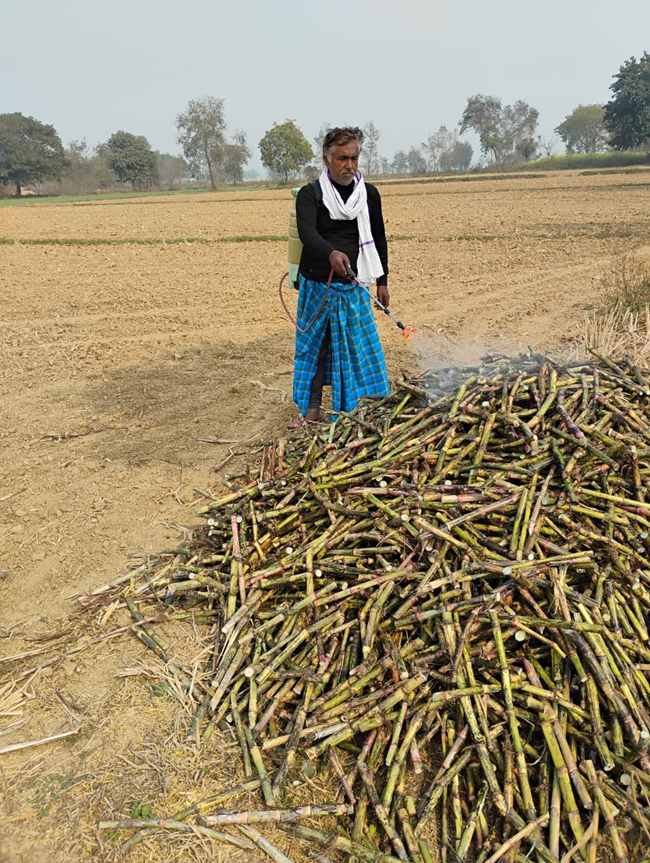Chemical control
Chemical control
- Application of Verticilliumlecanii orMetarhiziumanisopliae(1x10 9 CFU's/ml) at 2-3 litre/ha for control of sucking pests.
- Application of Beauveriabassiana(1x10 8 CFU's/gm) at 3kg/ha mixed with soil for control of white grub and termites.
Insect Pest management schedule for sugarcane crop
|
Period/ crop stage |
Target pest |
Management schedule recommended |
|
Pre- planting |
White grub, termites |
· Deep summer ploughing, avoiding monocropping system and destruction of all the crop stubbles. |
|
Selection of seed crop |
Mealy bug, scale insect and borers |
|
|
Selection of seed sets |
As above |
|
|
Seed treatments |
As above and white grub |
|
|
At planting |
Termite, white grub, root and shoot borer |
· Apply chlorpyriphos 20 EC @5 L/ha over cane sets in furrows with 1000 litre of water. |
|
At shoot stage (pre-monsoon) At cane stage (monsoon & post monsoon) At harvest |
Shoot, top, plassey and root borers Top borer Plassey borer Leaf hopper Black bug Scale insect White grub Internode borer Stalk borer Gurdaspur borer Mealy bug Leaf hopper Scale insect whitefly Woolly aphids - |
· Collect and destroy egg masses, remove and destroy infested shoots from just below ground level.
· Mechanical collection of infested plants and destroy from outside of the field. · Do not transport infested plants. · Monitoring of crop at frequent interval. During severe incidence light trap should be installed. · During April-May, detrash the two lower most leaves with egg masses and destroy them.
· Spray chlorpyriphos 20EC@ 2.5 l/ha in crop having no population of Epiricania melanoleuca.
· Apply quinolphos @ 2 l/ha when black bug appears and repeat sprays if needed. · Detrash the crop. Apply imidacloprid @ 100 ml/ha or cartap hydrochloride @ 1 kg/litre of water to the crop. · Use light trap to collect adult beetles and destroy them. Collect and destroy the adult beetles from feeding trees immediately after first heavy summer rain.
· Detrashing of cane stalk. Spray the crop with imidacloprid 17.8SL at 500 ml/ha one month interval till appearance of the pest. · Same practice may be adopted as mentioned under pre monsoon period.
· Spray the crop either with imidacloprid 17.8SL at 500 ml/ha after detrashing. Aoid water logged condition in the cane field and no rationing in low drying areas.
|



